-

Charles Adler
Dr. Adler has been at St. Mary’s College since 1997. Before then he was at Cleveland State University and the Naval Research Laboratory. He is the author of 40 scientific papers, many with undergraduate co-authors, and is the author of Wizards, Aliens and Starships: Physics and Math in Fantasy and Science Fiction, a popular book on the science in science fiction and fantasy. His blog, Wizards, Aliens, Starships and More, can be found at WordPress. His other interests include baking and working on the Great American (Fantasy) Novel in his spare time.
-

Maite Alvarez
PhD; Project Specialist, The J. Paul Getty Museum
-
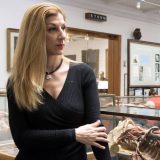
Roberta Ballestriero
Roberta Ballestriero, PhD
Associated Lecturer, Central Saint Martins College, University of the Arts, London
Art Historian in Residence, Gordon Museum of Pathology, King’s College, London
President, Ceroplastics – International Congress on Wax Modelling,
London 1-2-3 / 9 / 2017 – Padua 7-8 / 6 / 2019 – Mexico City 2021Dr Roberta Ballestriero graduated from the Academy of Fine Arts in Venice in 1998 and after obtaining a European PhD from the Complutense University of Madrid, Spain (where she won the Extraordinary Doctorate Award for the best thesis) she moved to Great Britain where has lectured for a number of British Universities in mainly art history since 2004.
She is currently an associate lecturer for the Masters of Art & Science, Central Saint Martins, University of the Arts, London. Since 2013 she has been the Art Historian in residence at the Gordon Museum of Pathology, Guy’s Hospital, King’s College London. Since 2019 she is a Scientific Member of the FAPAB Research Centre (Forensic Anthropology, Paleopathology, Anthropology and Bioarchaeology) Avola, Syracuse.
She is the author of several scientific publications and curator of cultural events and exhibitions on the subject of art, science and anatomy.
She was the founder and president of the first International Congress of Wax Modelling in forty years in London 2017 and Padua 2019: www.waxmodelling.com and she is organising the next congress in Mexico City in 2021.
She lives and works between England and Italy.
-
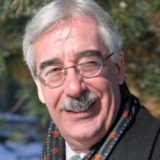
Kenneth Bartlett
Kenneth Bartlett received his PhD (1978) from the University of Toronto where he is Professor of History and Renaissance Studies (Victoria College). He was editor of Renaissance and Reformation/Renaissance et Réforme from 1985 until 1990 and President of the Canadian Society for Renaissance Studies from 1982 until 1984. Prof. Bartlett was the Founding Director of the University of Toronto Art Centre, and sat on the Board of the Gardiner Museum of Ceramic Art from 2001-2015. He was the Director of Faculty Programs in Arts and Science for 13 years, and in 2002 he was named the first Director of the Office of Teaching Advancement for the University of Toronto, a position he enjoyed until 2009.
He is the author of: The Experience of History (John Wiley and Sons); A Short History of the Italian Renaissance (University of Toronto Press, 2013), designated an Outstanding Academic Title for 2014 by Choice, the journal of the American Library Association; The Civilization of the Italian Renaissance (Revised edition 2011; first edition 1992); The English in Italy: A Study in Culture and Politics (1991); Humanism and the Northern Renaissance, with M. McGlynn, (2000); a second, expanded edition appeared in 2014 as The Northern Renaissance and the Reformation (UTP). He is co-editor or translator of several Italian Renaissance texts.
-

Walter Cunningham
On October 11, 1968, Walter Cunningham occupied the lunar module pilot seat for the eleven-day flight of Apollo 7 – the first manned flight test of the third generation United States spacecraft. With Walter M. Schirra, Jr., and Donn F. Eisele, Cunningham participated in and executed maneuvers enabling the crew to perform exercises in transposition and docking and lunar orbit rendezvous with the S-IVB stage of their Saturn IB launch vehicle; completed eight successful test and maneuvering ignitions of the service module propulsion engine; measured the accuracy of performance of all spacecraft systems; and provided the first effective television transmission of onboard crew activities.
The 263-hour, four-and-a-half million mile shakedown flight was successfully concluded on October 22, 1968, with splashdown occurring in the Atlantic – some eight miles from the carrier ESSEX (only 3/10 of a mile from the originally predicted aiming point). Cunningham’s last assignment at the Johnson Space Center was as Chief of the Skylab Branch of the Flight Crew Directorate.
Cunningham joined the Navy in 1951 and began his flight training in 1952. In 1953 he became a Marine Corps fighter pilot and served on active duty with the United States Marine Corps until August 1956 and in the Marine Corps Reserve program until 1975. His present rank is Colonel, USMCR (Retired). He has accumulated more than 4,500 hours of flying time, including more than 3,400 in jet aircraft and 263 hours in space.
Currently, Cunningham is a successful businessman, investor and Director of numerous public and private companies. He is author of The All American Boys, the human side of the space program. He is a radio talk show host and frequent lecturer throughout the United States, Europe and Asia.
-
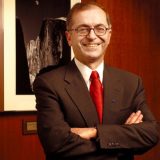
Charles Elachi
Charles Elachi was born in Lebanon and received a bachelor’s degree in physics from the University of Grenoble, France, and a diploma in engineering from the Polytechnic Institute, Grenoble (both in 1968). He received a master’s degree (1969) and doctorate (1971) in electrical sciences from Caltech. He also earned a master’s in business administration (1978) from USC and a master’s in geology (1983) from UCLA.
Dr. Elachi taught at Caltech, served in a variety of research and management positions at JPL beginning in 1971, specializing in remote sensing, and became the Director of JPL in May 2001. During his tenure as Director, JPL was involved in more than 20 missions including Cloudsat, Jason 1 and 2, Aquarius, OCO-2, GRACE, SMAP, GRAIL, Mars Odyssey, Mars Reconnaissance Orbiter, Phoenix, Cassini, Deep Impact, Stardust, Dawn, and Juno. Three rovers —Spirit, Opportunity and Curiosity— reached Mars and provided detailed information about the planet.
After retiring from JPL in June 2016 he became professor emeritus at Caltech, allowing him to pursue research interests while continuing to participate as a science investigator on a number of missions. He continues to advocate and be a spokesman for a strong space and Earth science program.
-
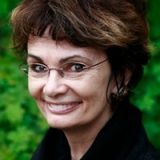
Claire Farago
Claire Farago is Professor Emerita at the University of Colorado Boulder. She has held visiting professorships at UCLA, UNC-Chapel Hill, the University of Melbourne, and York University, U.K. She has received fellowships from the Getty Research Institute, the National Endowment for the Humanities, the Fulbright Foundation, and elsewhere. Farago has published sixteen books, including Leonardo da Vinci’s Paragone (1992), Reframing the Renaissance: Visual Culture in Europe and Latin America 1450 to 1650 (1995), Leonardo da Vinci and the Ethics of Style (2008), Re-Reading Leonardo: The Treatise on Painting across Europe 1550-1900 (2009); and Art is Not What You Think It Is, co-authored with Donald Preziosi (2012). Her most recent book, The Fabrication of Leonardo da Vinci’s Trattato della Pittura, with a scholarly edition of the editio princeps (1651) and an annotated English translation), published in February, is the product of a ten-year collaboration with an international team of scholars (2018).
-

Morteza Gharib
Morteza Gharib is Hans W. Liepmann Professor of Aeronautics and Bioinspired Engineering and Director of the Graduate Aerospace Laboratories at Caltech in Pasadena, California.
Professor Gharib’s research interests cover a range of topics in conventional fluid dynamics and aeronautics. These include vortex dynamics, active and passive flow control, nano/micro fluid dynamics, bio-inspired wind and hydro energy harvesting, as well as advanced flow imaging diagnostics.
In addition, Professor Gharib is heavily involved in the bio-mechanics and medical engineering fields. His research activities in these fields can be categorized into two main areas: the fluid dynamics of physiological machines (such as the human circulatory system and aquatic breathing/ propulsion), and the development of medical devices (such as heart valves, cardiovascular health monitoring devices, and drug delivery systems).
-
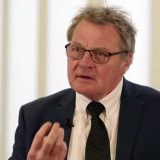
James Gimzewski
Jim Gimzewski is a Distinguished Professor of Chemistry at the University of California, Los Angeles; Faculty Director of the Nano & Pico Characterization Core Facility of the California NanoSystems Institute; Scientific Director of the Art|Sci Center and Principal Investigator and Satellites Co-Director of the WPI Center for Materials NanoArchitectonics (MANA) in Japan. He is a Fellow of the Royal Society.
Prior to joining the UCLA faculty, he was a group leader at IBM Zurich Research Laboratory, where he research in nanoscale science and technology from 1983 to 2001. Dr. Gimzewski pioneered research on mechanical and electrical contacts with single atoms and molecules using scanning tunneling microscopy (STM) and was one of the first persons to image molecules with STM. His past accomplishments include the first STM-based fabrication of molecular suprastructures at room temperature using mechanical forces to push molecules across surfaces, the discovery of single molecule rotors. He also developed new micro-nano sensors based on nanotechnology, which explore ultimate limits of sensitivity and measurement.
This approach has been used to convert biochemical recognition into Nanomechanics. His current interests are in the nanomechanics of cells and bacteria where he collaborates with the UCLA Medical and Dental Schools. He is involved in projects that range from the operation of X-rays, ions and nuclear fusion using pyroelectric crystals, direct deposition of carbon nanotubes using atmospheric plasma techniques and single molecule DNA profiling. Recently his research has focused on self organization and emergent behavior using a device called the atomic switch network (ASN) which aimed at creating a synthetic neocortex using self assembly atomic switches that act as synthetic synapses. Dr. Gimzewski is also involved in numerous art-science collaborative projects that have been exhibited in museums throughout the world.
-
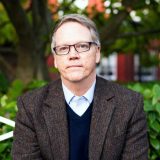
Matthew Landrus
Dr Matthew Landrus examines intersections of the practical arts and natural philosophy during the fourteenth through eighteenth centuries. As a specialist on the working methods and intellectual interests of artist/engineers, he addresses cross-disciplinary solutions to investigative and inventive developments in the histories of ideas, science and technology. Much of this work addresses the histories of artisan notebooks and the art academy. Although a specialist on Leonardo da Vinci, Landrus also studies Anglo-Saxon manuscripts, historiography, paradoxes in visual culture, and the histories of aesthetics, figural proportions and colonial culture.
For an exhibition at the Biblioteca Ambrosiana in 2013, he is writing a catalogue on Leonardo da Vinci’s research for a treatise on mechanical engineering. Landrus’ other work on Leonardo includes: Leonardo da Vinci’s Giant Crossbow (2010), Le armi e le macchine da guerra: il De re militari di Leonardo (2010), and The World of Leonardo da Vinci (2006). For an essay on the Codex Huygens, he studies what remains in this volume and in other records of Leonardo’s lost treatise on human proportions and movements. This is part of a larger project to reconstruct elements of Leonardo’s treatise programme, along with its context, development, form and organization. Two additional directions of this research extend to the uses of proportion theories in early modern visual and technical arts, as well as history of representations of human proportions.
-
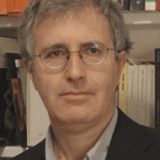
Domenico Laurenza
Domenico Laurenza is a science historian with interest in the history of art and visual culture. In particular he is an expert of Leonardo da Vinci scientific work and of the history of anatomy and technology in the Renaissance. He is now devoting a substantial portion of his attention to the history of geology and paleontology in 16th-19th centuries. He was trained in Medicine (University of Naples) and Historical Sciences (PhD, Scuola Superiore di Studi Storici, San Marino, 1996). He is principal researcher of bgC3, Bill Gates Company 3, Seattle, US and scientific consultant of Museo Galileo, Florence. He has taught in several universities worldwide, including the University of Florence and McGill University, Montreal and has been fellow of several scientific institutions, including the Warburg Institute in London, the Metropolitan Museum of Art in New York and the Italian Academy at Columbia University, New York. He is the author of many books; available in English are: Leonardo on Flight (John Hopkins University Press 2007), Leonardo’s Machines: Da Vinci’s Inventions Revealed (David & Charles, 2006), Art and Anatomy in Renaissance Italy: Images from a Scientific Revolution (The Metropolitan Museum of Art and Yale University Press, 2012) and Leonardo’s Da Vinci’s Codex Leicester. A Critical Edition (in collaboration with Martin Kemp, Oxford University Press, forthcoming).
-
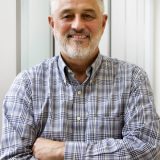
Roger Malina
Roger Malina is a physicist, astronomer and Executive Editor of the Leonardo publications at MIT Press. With dual appointments as Professor of Arts and Technology and Professor of Physics at UT Dallas, his work focuses on connections among the natural sciences and arts, design and humanities.
Malina is the former Director of the Observatoire Astronomique de Marseille Provence (OAMP) in Marseille and was a member of its observational cosmology group which collaborated on investigations regarding the nature of dark matter and dark energy. He has been a member of the Mediterranean Institute for Advanced Study (Institut Méditerranéen de Recherches Avancées, IMERA), that contributes to trans-disciplinarity between the sciences and the arts and places emphasis on the human dimensions of the sciences.
With a specialty in space instrumentation, Malina was the principal investigator for the NASA Extreme Ultraviolet Explorer Satellite at the University of California, Berkeley. He also founded the Leonardo organizations in San Francisco and Paris, whose missions are to promote work that explores the intersection of the arts, sciences, and new technologies.
Malina received an Honorary Doctorate from the Polytechnic University of Valencia Spain, holds a BS in Physics from the Massachusetts Institute of Technology and a PhD in Astronomy from the University of California, Berkeley.
-

Shumpei Mori
MD (Research Associate, Kobe University, Japan and UCLA)
-
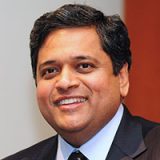
Kalyanam Shivkumar
Dr. Shivkumar received his medical degree from the University of Madras, India in 1991 and his PhD from UCLA in 2000. He completed his cardiology fellowship training at the University of California, Los Angeles, and upon completion of his training joined the faculty at University of Iowa, where he also served as the Associate Director of Cardiac Electrophysiology.
In 2002, he was recruited back to UCLA to direct the newly created UCLA Cardiac Arrhythmia Center at the David Geffen School of Medicine at UCLA. His field of specialization is interventional cardiac electrophysiology and he heads a group at UCLA that is involved in developing innovative techniques for the non-pharmacological management of cardiac arrhythmias.
He is currently Professor of Medicine and holds a joint appointment in the Department of Radiology at UCLA. Dr. Shivkumar is certified by the American Board of Internal Medicine in the subspecialties of Cardiovascular Disease and Clinical Cardiac Electrophysiology.
-

Victoria Steele
PhD (Curator, UCLA Collections)
-

Sara Taglialagamba
Lamporecchio, Fondazione Rossana e Carlo Pedretti
Firenze, Museo Galileo
Paris, Ecole Pratique des Hautes Etudes
She extensively collaborated with Professor Carlo Pedretti (1928-2018), the greatest Leonardo’s expert in the world. He was also Professor Emeritus of Italian Art History at the University of California in Los Angeles, where he also held the Chair of Leonardo Studies. Thanks to his teachings and with a PhD and Post PhD (Ecole Pratique des Hautes Etudes, Sorbonne, Paris), Sara was Professor in prestigious Institutes in Italy and abroad, publishing monographs and articles and receiving awards of the highest level. Her favourite fields of study are those of static and dynamic mechanics, automation, robotics, engineering, hydraulic and pneumatic devices, fountains and watchmaking. Her first book “Automations and Robotics by Leonardo da Vinci”, published in 2010, received an honourable mention from Scientific American magazine in an article about some robots built at NASA. She was visiting professor at the UNAM Robotics department of Mexico City and she will be visiting professor at UCLA (LA, USA). She is currently scholarship recipient at the Museo Galileo in Florence. She was the one who identified the real functionality of the first prototype of a robot designed by Leonardo in 1494. Last March, she recently gave her TED TALK on Leonardo da Vinci. Robotica, meraviglia e meccanica dell’universo. She is working at the Rossana and Carlo Pedretti and she is in charge of the lines of research and contacts with Scholars, Institutions, Universities and Foundations. She currently holds also a 2 years fellowship at the Museo Galileo in Florence.
-

Victoria Vesna
Victoria Vesna, Ph.D., is an Artist and Professor at the UCLA Department of Design Media Arts and Director of the Art|Sci Center at the School of the Arts (North campus) and California NanoSystems Institute (CNSI) (South campus). Although she was trained early on as a painter (Faculty of Fine Arts, University of Belgrade, 1984), her curious mind took her on an exploratory path that resulted in work can be defined as experimental creative research residing between disciplines and technologies. With her installations she investigates how communication technologies affect collective behavior and perceptions of identity shift in relation to scientific innovation (PhD, CAiiA_STAR, University of Wales, 2000). Her work involves long-term collaborations with composers, nano-scientists, neuroscientists, evolutionary biologists and she brings this experience to students. Victoria has exhibited her work in 20+ solo exhibitions, 70+ group shows, has been published in 20+ papers and gave 100+ invited talks in the last decade. She is the North American editor of AI & Society journal (Springer Verlag, UK) and in 2007 published an edited volume – Database Aesthetics: Art in the Age of Information Overflow (Minnesota Press) and another in 2011 — Context Providers: Conditions of Meaning in Media Arts. (co-edited with Christiane Paul and Margot Lovejoy) Intellect Ltd, 2011. Currently she is working on a series Art Science & Technology based on her online lecture class.
-

Francis Wells
Francis Wells is a Cardiothoracic surgeon based in Papworth Hospital, part of the University of Cambridge group of specialist hospitals. Trained in London, Cambridge and the University of Alabama in Birmingham Alabama where he was senior research fellow to Professor John Kirklin, a founding father of modern cardiac surgical practice. His specialist area of interest has been heart valve reconstruction, cardiopulmonary transplantation and the surgical management of intra-thoracic malignancy.
In parallel with his clinical practice Francis has had a lifelong interest in the arts and a specific interest in the Renaissance, having studied in depth the work of Leonardo da Vinci. This work led recently to the publication of his book The Heart of Leonardo.
He has sponsored several artists in residence within his clinical practice and this has led to several pieces which have appeared in major exhibitions including the Royal Academy summer show. Himself a recipient of the Sir Hugh Casson prize for drawing, Francis enjoys drawing, painting and playing the piano.
-
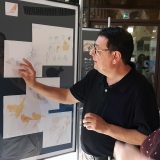
Mauro Zocchetta
Mauro Zocchetta is a professor at the Academy of Fine Arts in Venice, where since 1984 he has held the chair of Artistic Anatomy. He is one of the authors of the manuals of artistic anatomy: Struttura uomo. Manuale di anatomia artistica (Neri Pozza 1998), Il movimento: passo, corsa e salto (Neri Pozza, 2001), Struttura uomo in movimento (Angelo Colla, 2015). In 2017 he was elected Academic Olympic in the science and technology class.
He has collaborated on theatrical projects with various companies, including the Company Teatro Stabile of Veneto for classic shows at the Teatro Olimpico in Vicenza. He has supervised the preparation of shows in exhibition spaces including the GAMEC in Bergamo (Palma il Vecchio, 2015), the Scuderie del Quirinale in Rome (Tiziano, 2013; Lorenzo Lotto, 2011; Giovanni Bellini, 2008), the Municipal Art Gallery Ancona (Medusa, Tra luce ed emozione, 2013), the Palazzo del Monte di Pietà of Padua (Bembo and the invention of the Renaissance, 2013; Guariento and the Padua of Carraresi, 2011), the Palazzo della Gran Guardia in Verona (Mantegna and the Arts, 2006), Palazzo degli Alberti in Prato, Palazzo Bonaguro (Ezzelini, 2001) and the Civic Museum (Federico Bonaldi, La Magia del Racconto, 2015) and Palazzo Sturm (redevelopment of the ceramics collection) in Bassano.
In Venice, he has organized the exhibition Guido Cirilli, Architect Academy in 2014 at the Magazzini del Sale, the pavilion of the Italian Academies of Fine Arts at the Tese for the 54th Biennale 2011, for the Gallerie dell’Accademia the exhibition, Aldo Manuzio. The Renaissance of Venice, March 2016.
In Vicenza he oversaw: the reorganization of the church of SS. Ambrogio and Bellino, reconverting it into the new AB23, a center of contemporary art for young international artists; and, the museum layout and the arrangement of the works of the Civic Art Gallery of Palazzo Chiericati (2016).
Also, for the Palazzo Chiericati he has set up the following exhibitions: Il trionfo del colore, da Tiepolo a Canaletto e Guardi, Vicenza e i capolavori dal Museo Puskin di Mosca (2019); Ferro, Fuoco e Sangue, Vivere la Grande Guerra (2016) a travelling exhibition that is still hosted at the “Le Gallerie” exhibition site in Trento. Between 1997 to 2012 the exhibitions: Cinque Secoli di Volti, in the basements of Palazzo Chiericati, 2012, Novecento vicentino, 2011; I disegni di Andrea Palladio, 2007; L’ottocento a Vicenza, 2000; Progetti e utopie di Ottone Calderari, 1999; Omaggio a Neri Pozza, 1998.
Also in Vicenza he has arranged exhibitions at the following locations:
– Basilica Palladiana (La carità a Vicenza, 2002; L’arte del XX secolo nelle collezioni private vicentine, 1998)
– Museo Diocesano (Il Piviale dei pappagalli. Dal trono all’altare, 2015)
– Palazzo Thiene, with which he collaborated for the series of exhibits Capolavori che ritornano, including the first Bellini e Vicenza, 2003 and the most recent, l’Ottocento e il Primo Novecento nella Collezione Banca Popolare di Vicenza, 2014
– Teatro Olimpico (Abiti per una tragedia. L’Edipo re e i suoi costumi, 2005)
– Palazzo Cordellina in collaboration with the Biblioteca Bertoliana (L’Aquila e il Leone, la battaglia dimenticata, 2014)
– Palazzo Barbaran da Porto of the Centro Internazionale di Studi di Architettura “Andrea Palladio” (such as: Carlo Scarpa, uno sguardo contemporaneo, 2011; Joaquin Bérchez, Photographs, e Architectural Proposals, 2006; Guarino Guarini, 2001; Disegni e studi di Manfredo Tafuri, 1995; the educational game Il gioco della villa and the models of the exhibition Andrea Palladio e la Villa veneta, da Petrarca a Carlo Scarpa nel 2005; directing videos for exhibitions Scamozzi. Il disegno dell’architetto del 2004 e Michelangelo, disegni di architettura del 2006.For CISA and the Royal Academy of Arts in London in 2008 he collaborated on the project of the Andrea Palladio 500 traveling exhibition, between Vicenza, London, Barcelona and Istanbul. Also for CISA in 2015 he set up the Villa-Agricoltura exhibition at Villa Contarini (Piazzola sul Brenta – Padua).
In 2012, together with the group led by architect Francesca Leto, he participated in the competition for the 21 New Italian Churches, organized by the Italian Episcopal Conference, ranking first in the project for the new church to be built for the Parish “S. Ignazio da Laconi” in Olbia (OT), diocese of Tempio Ampurias.